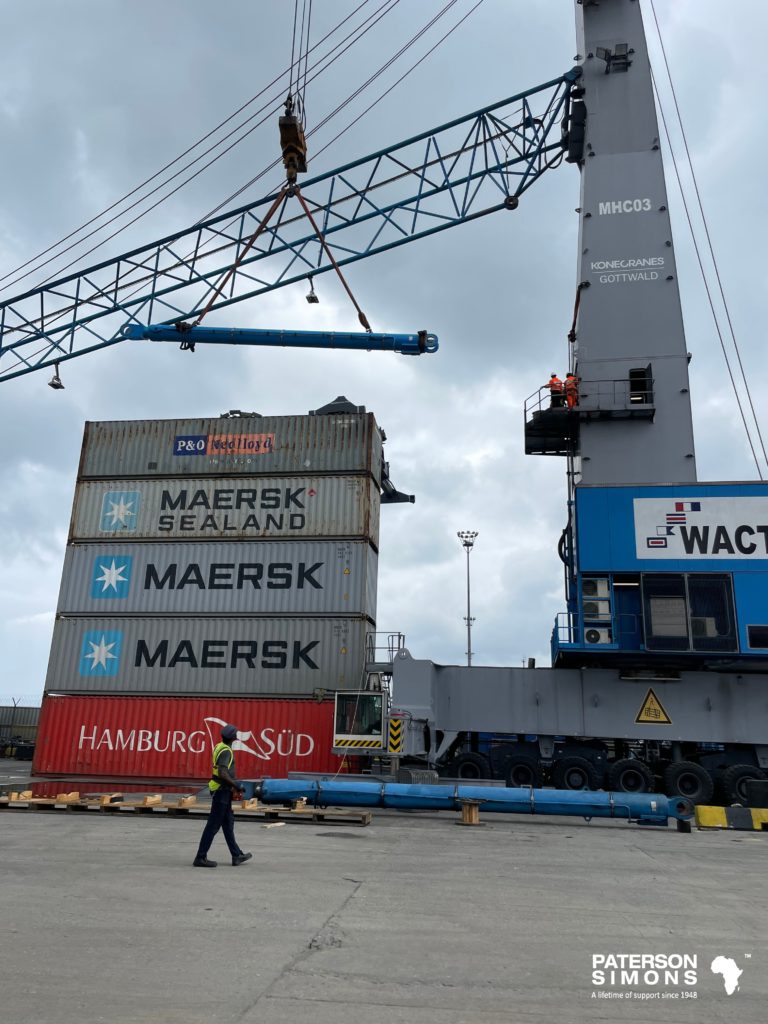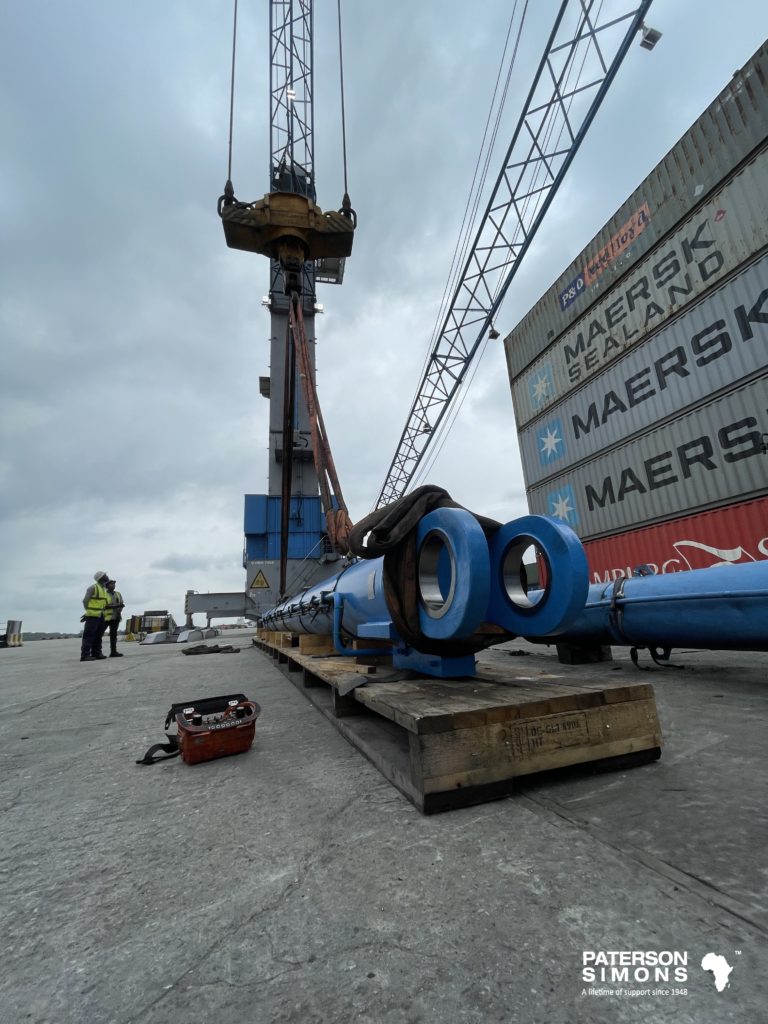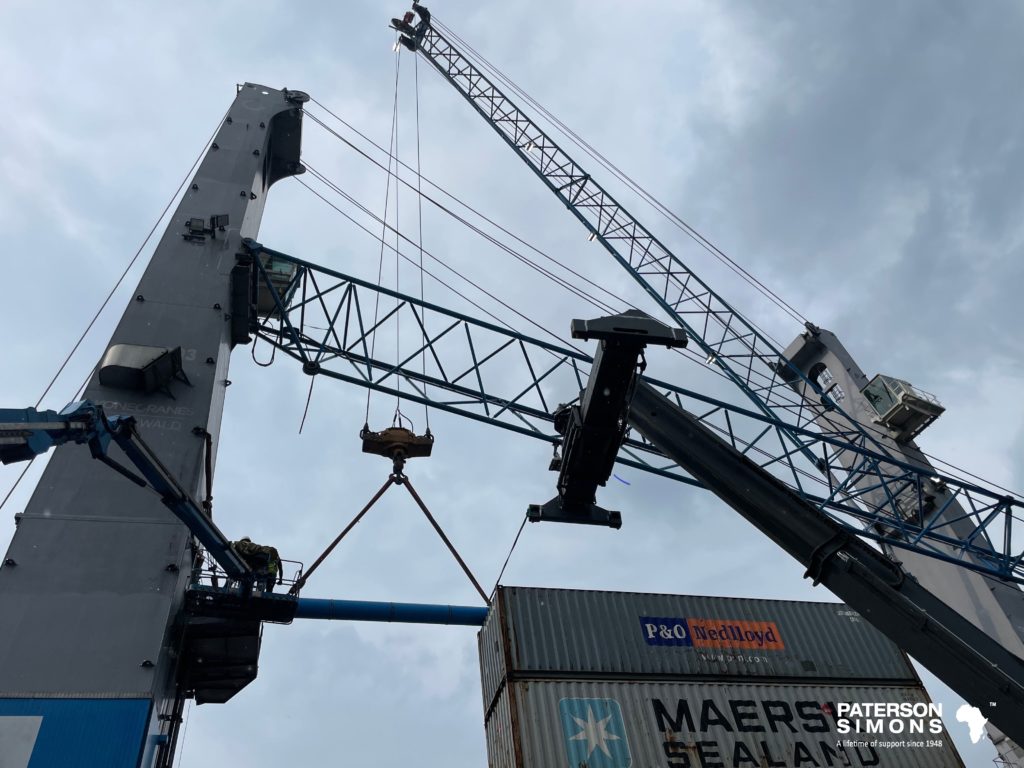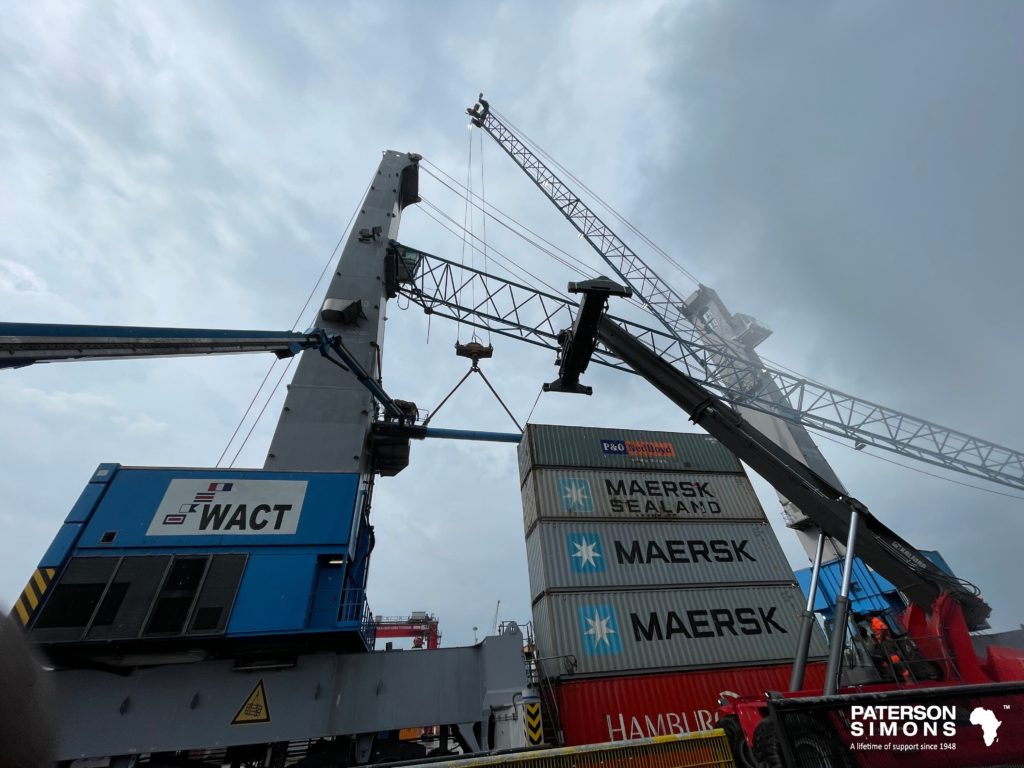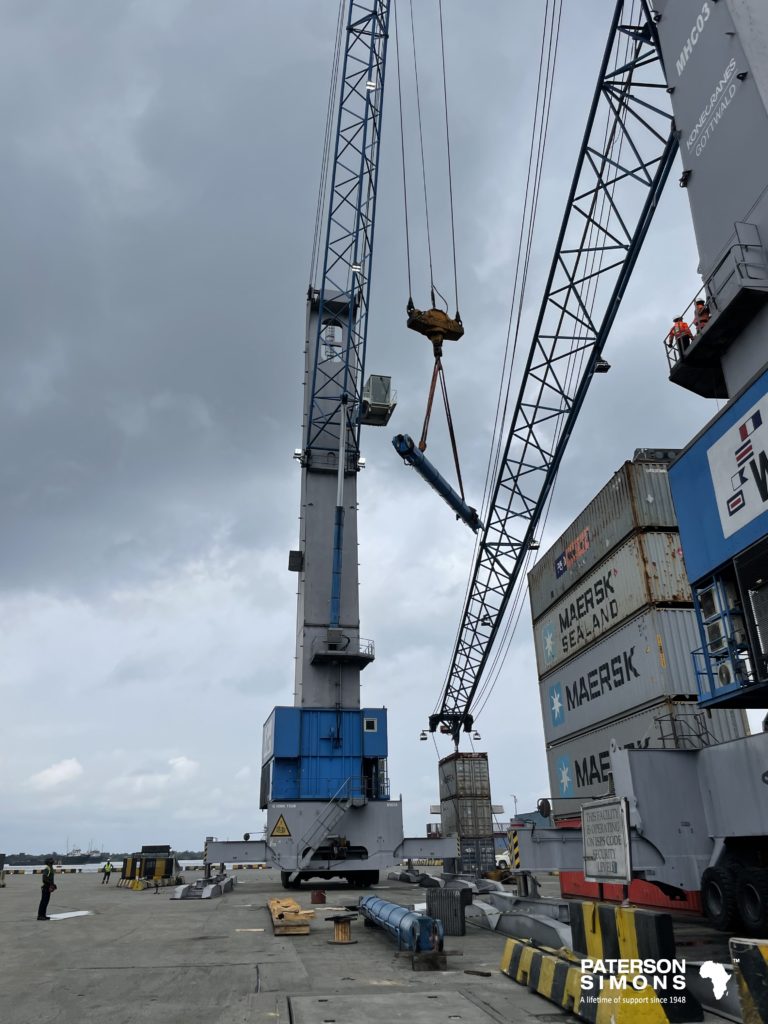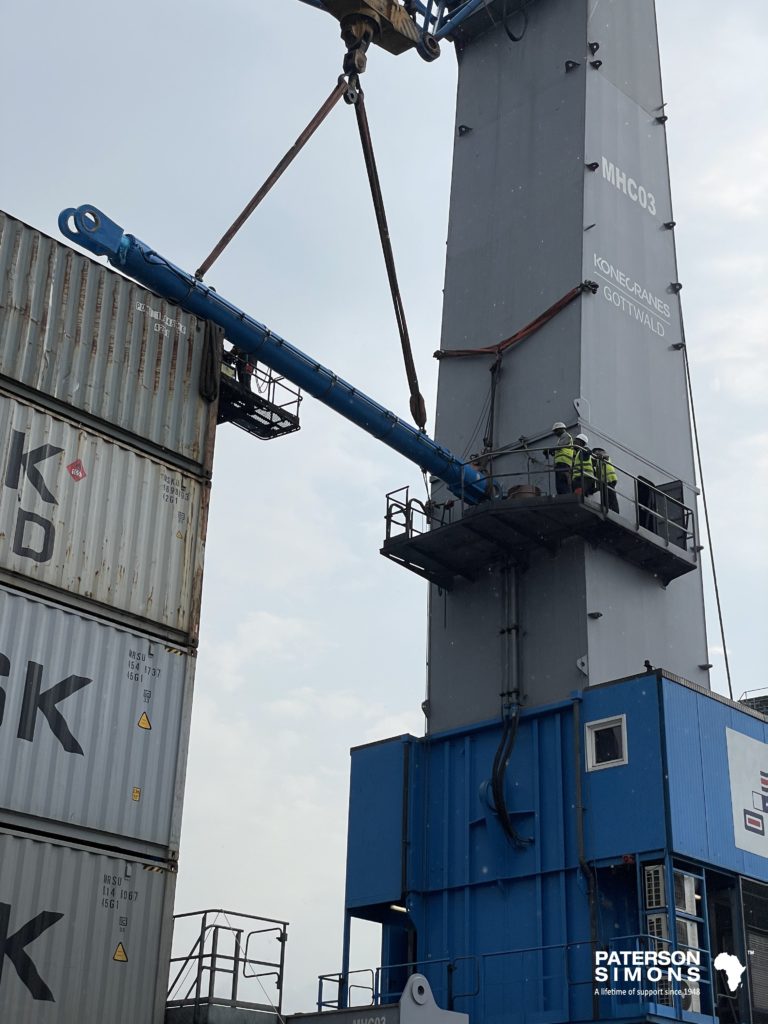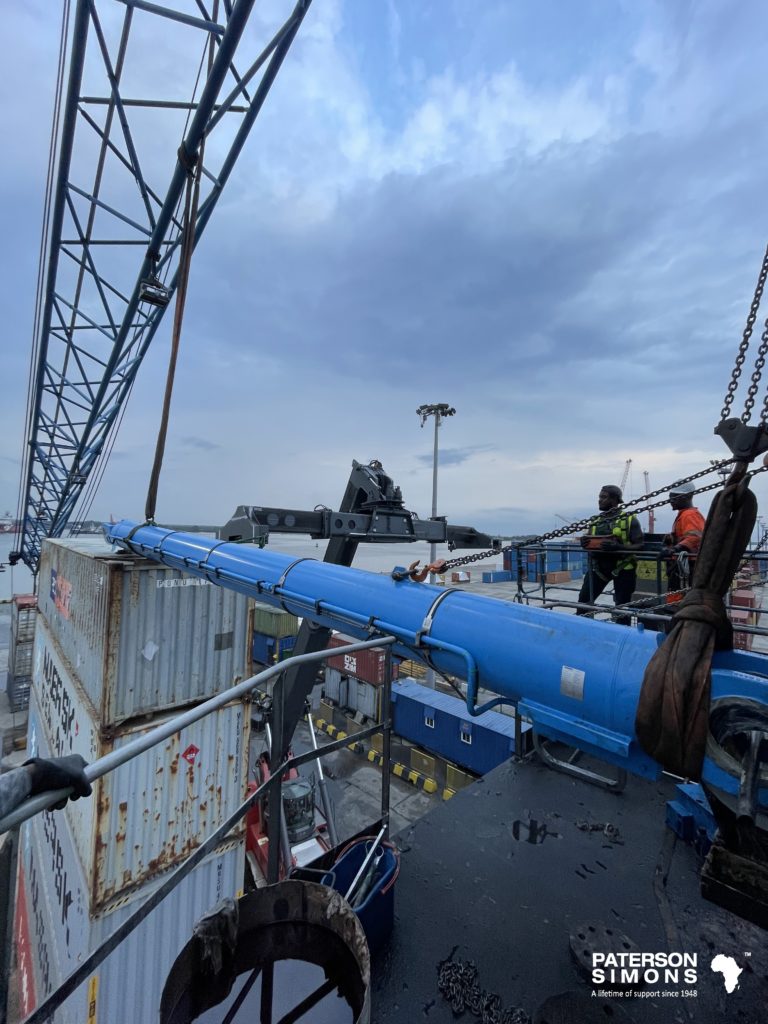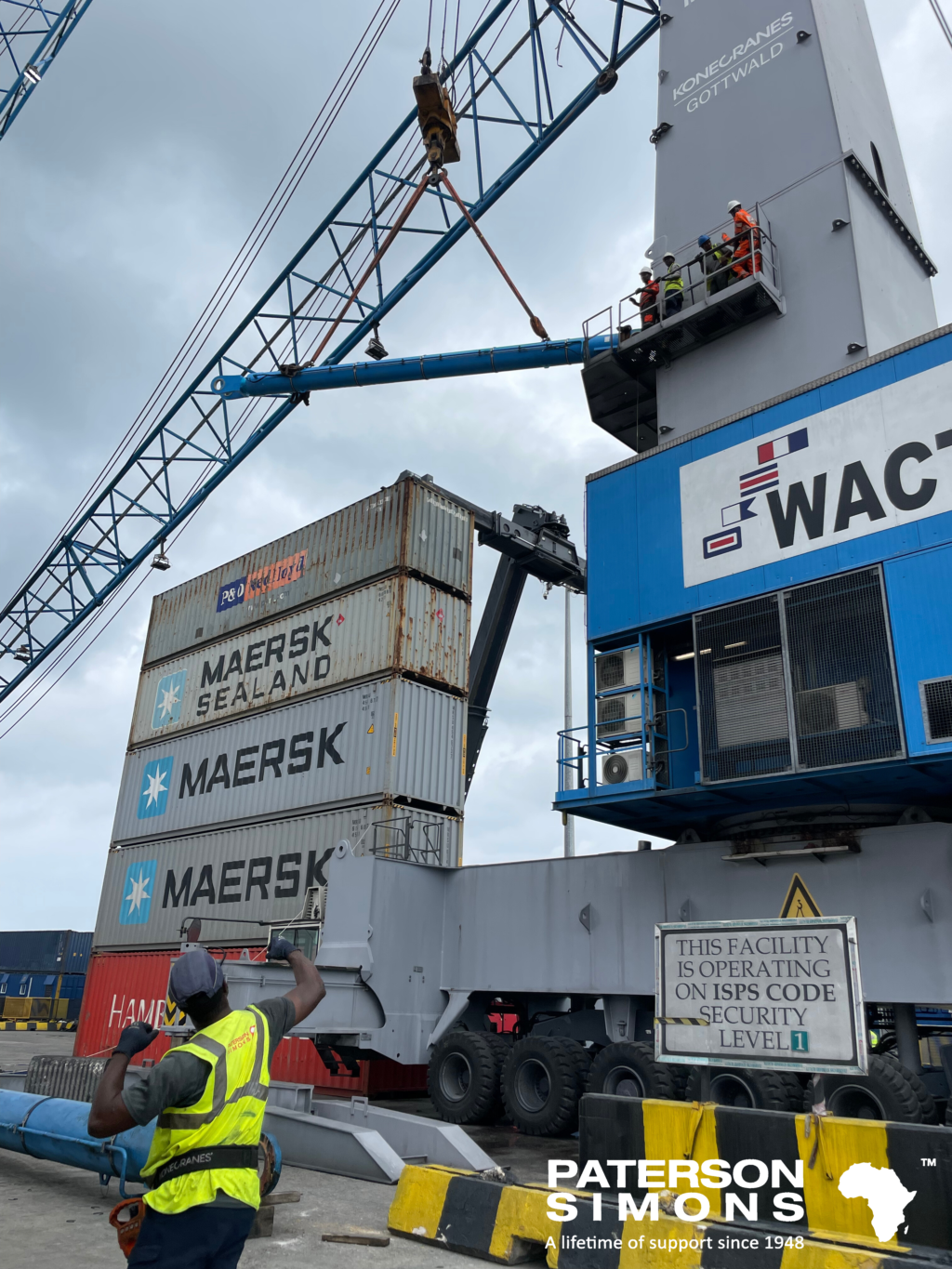Paterson Simons recently completed the replacement of a luffing cylinder for a Konecranes Gottwald Mobile Harbour Crane (MHC) at the West Africa Container Terminal in Onne, Nigeria (WACT).
Luffing, in the context of crane operation, refers to adjusting the crane’s boom movement either inward (luffing in) or outward (luffing out). This action is facilitated by a heavy-duty hydraulic cylinder, which houses a piston or piston rod. Over time, these cylinders might develop hydraulic oil leaks due to factors like worn-out seals or damage to the piston rod impacting the seals. When such leaks occur, the cylinder must be removed from the crane and either replaced with a new one or refurbished with new seals before reinstallation.
While the average service life of a cylinder is approximately 25,000 hours, there are instances where replacement becomes necessary before reaching this threshold. Factors contributing to premature replacement include the quality of cylinder seals, piston rod damage, oil quality, and adverse weather conditions.
Any luffing cylinder replacement should be subject to a rigorous job safety risk assessment but typical steps would include:
- Determining the cylinder’s weight to establish the Safe Working Load (SWL) of the required slings, belts, shackles, or chain blocks.
- Parking the crane in a clear area devoid of obstructions to ensure safety.
- Fully retracting the crane’s boom and securing it on a sturdy platform.
- Safely securing the cylinder using slings, shackles, and chain blocks.
- Removing the upper pin.
- Uninstalling the control clock.
- Adjusting the cylinder to a horizontal position and removing the lower pin.
- Lowering the cylinder to the ground using a supporting crane.
- (The reverse of these steps is followed to install a new cylinder.)
- After completion, performing small up-and-down movements of the boom to circulate hydraulic fluid throughout the system.
- Positioning the boom a measured distance (e.g., 10cm) above its resting point and monitoring it for an hour to detect any internal leakage. Once confirmed, the boom is fully raised, and a load test can be conducted.
- Fine-tuning pressure levels in the program to ensure proper speeds for various hydraulic operations of the crane.
Prioritizing the safety of both personnel and equipment is paramount during luffing cylinder replacement. Utilizing certified equipment and components is crucial. For enhanced safety, additional measures such as securing slings around the cylinder and loosely securing these at specific points on the boom and tower lugs should be considered.
Thank you to Anthony Udo and the Paterson Simons Nigeria team for the successful execution of this project.
